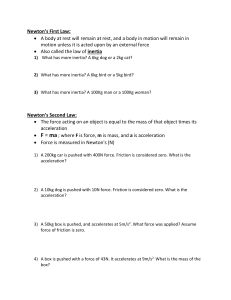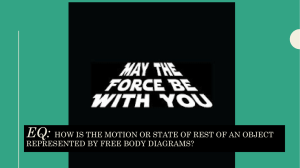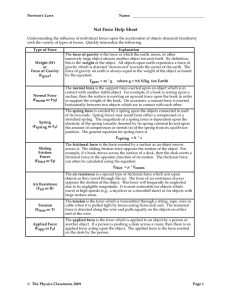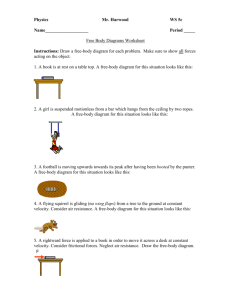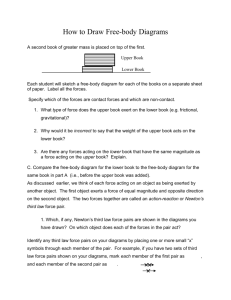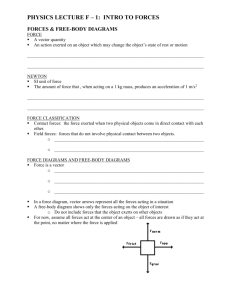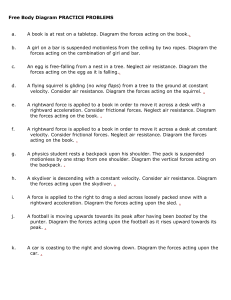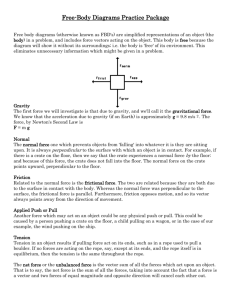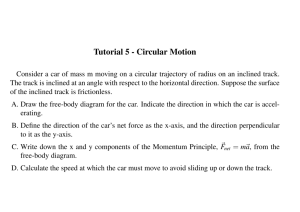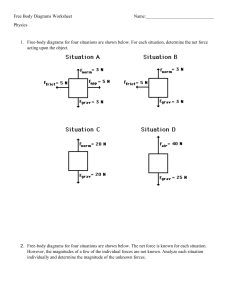Newton`s Second Law-notes
advertisement
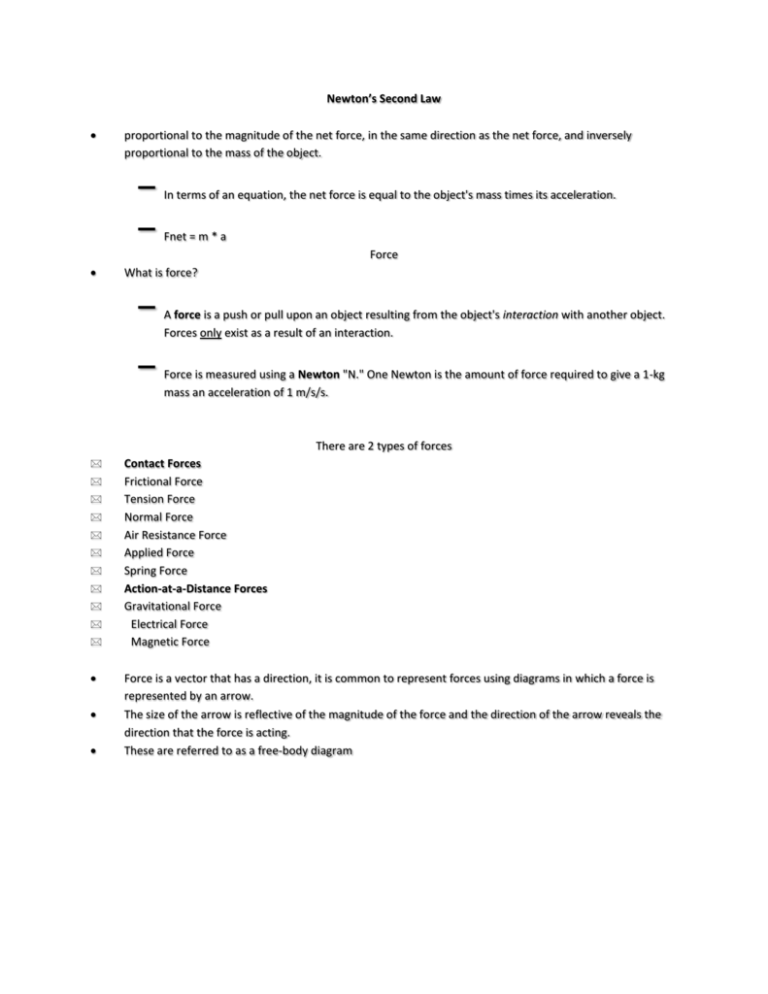
Newton’s Second Law proportional to the magnitude of the net force, in the same direction as the net force, and inversely proportional to the mass of the object. – – In terms of an equation, the net force is equal to the object's mass times its acceleration. Fnet = m * a Force What is force? – – A force is a push or pull upon an object resulting from the object's interaction with another object. Forces only exist as a result of an interaction. Force is measured using a Newton "N." One Newton is the amount of force required to give a 1-kg mass an acceleration of 1 m/s/s. There are 2 types of forces Contact Forces Frictional Force Tension Force Normal Force Air Resistance Force Applied Force Spring Force Action-at-a-Distance Forces Gravitational Force Electrical Force Magnetic Force Force is a vector that has a direction, it is common to represent forces using diagrams in which a force is represented by an arrow. The size of the arrow is reflective of the magnitude of the force and the direction of the arrow reveals the direction that the force is acting. These are referred to as a free-body diagram Applied Force Fapp An applied force is a force that is applied to an object by a person or another object. If a person is pushing a desk across the room, then there is an applied force acting upon the object. The applied force is the force exerted on the desk by the person. Gravity Force (also known as Weight) Fgrav The force of gravity is the force where massively large object attracts another objects towards itself. The force of gravity can be found by the equation: Fgrav = m * g where g = 9.8 N/kg (on Earth) and m = mass (in kg) Changes in gravitational pull http://www.wolframalpha.com/widget/widgetPopup.jsp?p=v&id=d34e8683df527e3555153d979bcda9cf&ti tle=Gravitational%20Fields&theme=red&i0=Chicago%2C%20IL&podSelect=&includepodid=Input&includepo did=GravitationalFieldStrength Normal Force Fnorm The normal force is the support force exerted upon an object that is in contact with another object. For example, if a book is resting upon a surface, then the surface is exerting an upward force upon the book in order to support the weight of the book. Friction Force Ffrict The friction force is the force exerted by a surface as an object moves across it. Friction often opposes the motion of an object. Friction results from the intermolecular attractive forces between molecules of different surfaces. Ffrict = µ • Fnorm Air Resistance Force Fair The air resistance is a special type of frictional force that acts upon objects as they travel through the air. The force of air resistance is often observed to oppose the motion of an object. Tension Force Ftens The tension force is the force that is transmitted through a string, rope, cable or wire when it is pulled tight Spring Force Fspring The spring force is the force exerted by a compressed or stretched spring upon any object that is attached to it. Assignment Discovering forces stations Typical Free-Body Diagram How do we determine the total force acting on an object Free-Body Diagrams – – – – The object is represented as a square. The forces acting on the object are drawn from its center. The size and direction of the vector represents the size and direction of the force. Include a scale and reference coordinates. Vector addition can then be used to determine the net force. An egg is free-falling from a nest in a tree. Neglect air resistance. The free-body diagram for this situation is shown below: A flying squirrel is gliding (no wing flaps) from a tree to the ground at constant velocity. Consider air resistance. The free-body diagram for this situation is shown below: A rightward force is applied to a book in order to move it across a desk with a rightward acceleration. Consider frictional forces. Neglect air resistance. A skydiver is descending with a constant velocity. Consider air resistance. Figuring out Net Force Find the unknown values of the following forces, given the total overall force. ADG- BEH- CF- Assignment Free-body diagrams

